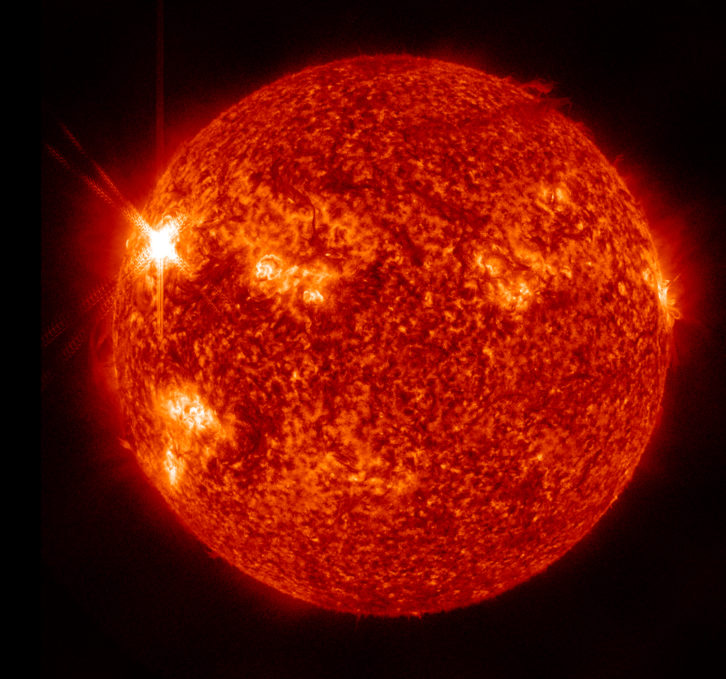That solar activity can have an effect on radio communications is well known. Sunspots, solar flares, coronal mass ejections and other disturbances 93 million miles away at the center of the solar system can cause problems for satellites circling earth as well as for shortwave and other HF radio broadcasts.
When the energy of a solar flare reaches the Earth, it can temporarily increase the density of the ionosphere, a phenomenon known as Sudden Ionospheric Disturbance or the Mögel-Dellinger Effect. That in turn causes HF radio waves to be more completely absorbed by the ionosphere, creating short fade outs or even complete blackouts for shortwave broadcasts that can last for minutes or even hours.
Which is all an excuse to post this picture from NASA’s Solar Dynamics Observatory (SDO) at Goddard Space Flight Center.

The bright light at the upper left is an X 1.9 Class solar flare, numbered AR1339, emitted from the Sun yesterday (3:27 p.m. EDT on Nov. 3, 2011). According to NASA, disruptions to some radio communications were noted on Earth about 45 minutes later. The SDO plans to continue to watch this region of the Sun for similar activity over the next 10 days.
This blog post was updated to restore a broken image.







